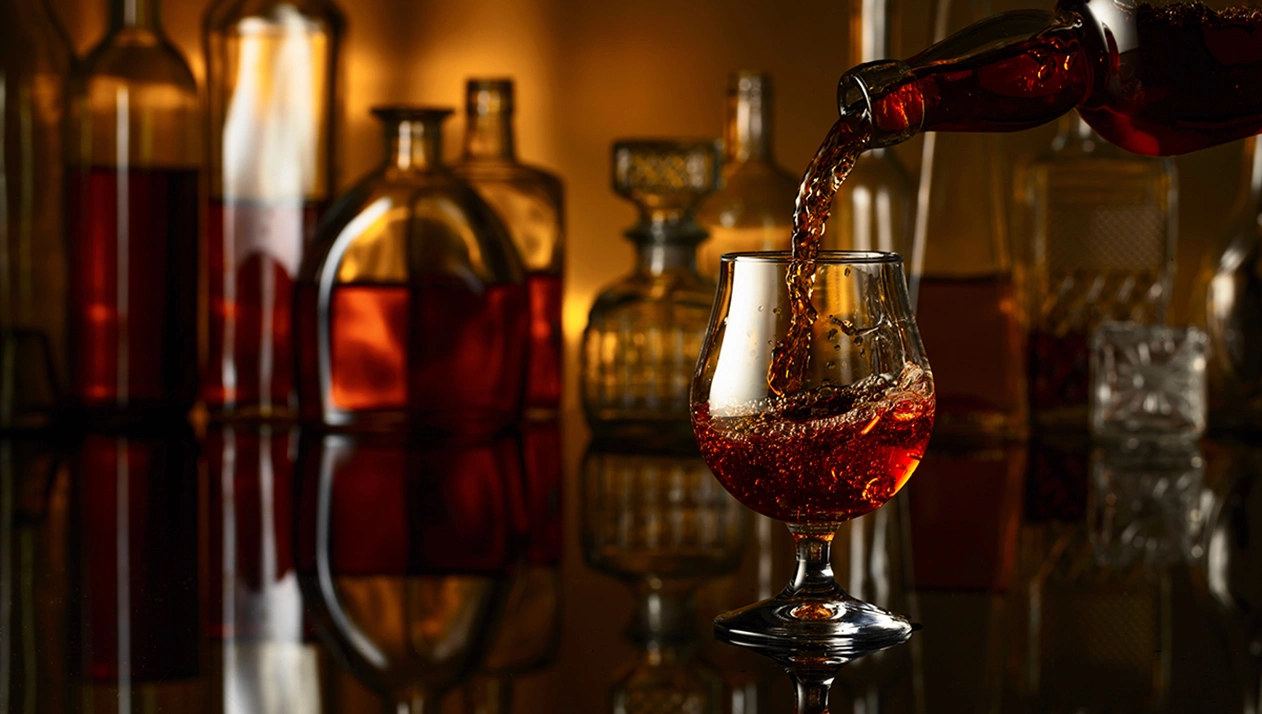Brandy: what it is, types, aging, serving, and cocktails
“Brandy” is the generic name for a strong distilled spirit; depending on the style, its strength is usually between 40% and 60% ABV. As a category, brandy covers a whole family of spirits made with broadly similar production techniques. It includes French Cognac and Armagnac (traditionally made from grapes) as well as fruit distillates such as Calvados, grappa, or slivovitz (plum brandy).
See our Brandy collection — from VS/VSOP/XO to Armagnac, Calvados, and grappa.
A Short History of Brandy
Brandy making rests on distillation. Using simple stills, Greeks, Romans, Arabs, and others produced strong spirits between the 10th and 12th centuries. The drink we recognize as brandy, however, took shape in the 15th–16th centuries, with the Netherlands often cited as its cradle.
Its rise is tied to Dutch sailors and salt traders. They bought salt from southern France, in the Charente basin, and from local vintners they also took on cask wine prized for its delicate flavor. Long voyages were unkind to wine, and much of it spoiled before reaching port.
The Dutch solution was to distill the wine before departure. Distillation boosted its strength, stabilized it for long storage in barrels, and—crucially—reduced volume, freeing space in the hold.
This “burnt/distilled wine” was called brandewijn —“burnt wine”—and spread through Northern Europe under that name, gaining popularity. Initially it was diluted with water before drinking, essentially restoring the pre-distillation strength (replacing water lost during distillation).
Many, however, preferred it neat. Ageing the distilled wine in oak barrels was found to refine the bouquet and amplify aromas. Devotees of the “burnt wine” multiplied and technique improved. In time, English shortened brandewijn to “brandy,” and different regions developed their own styles.
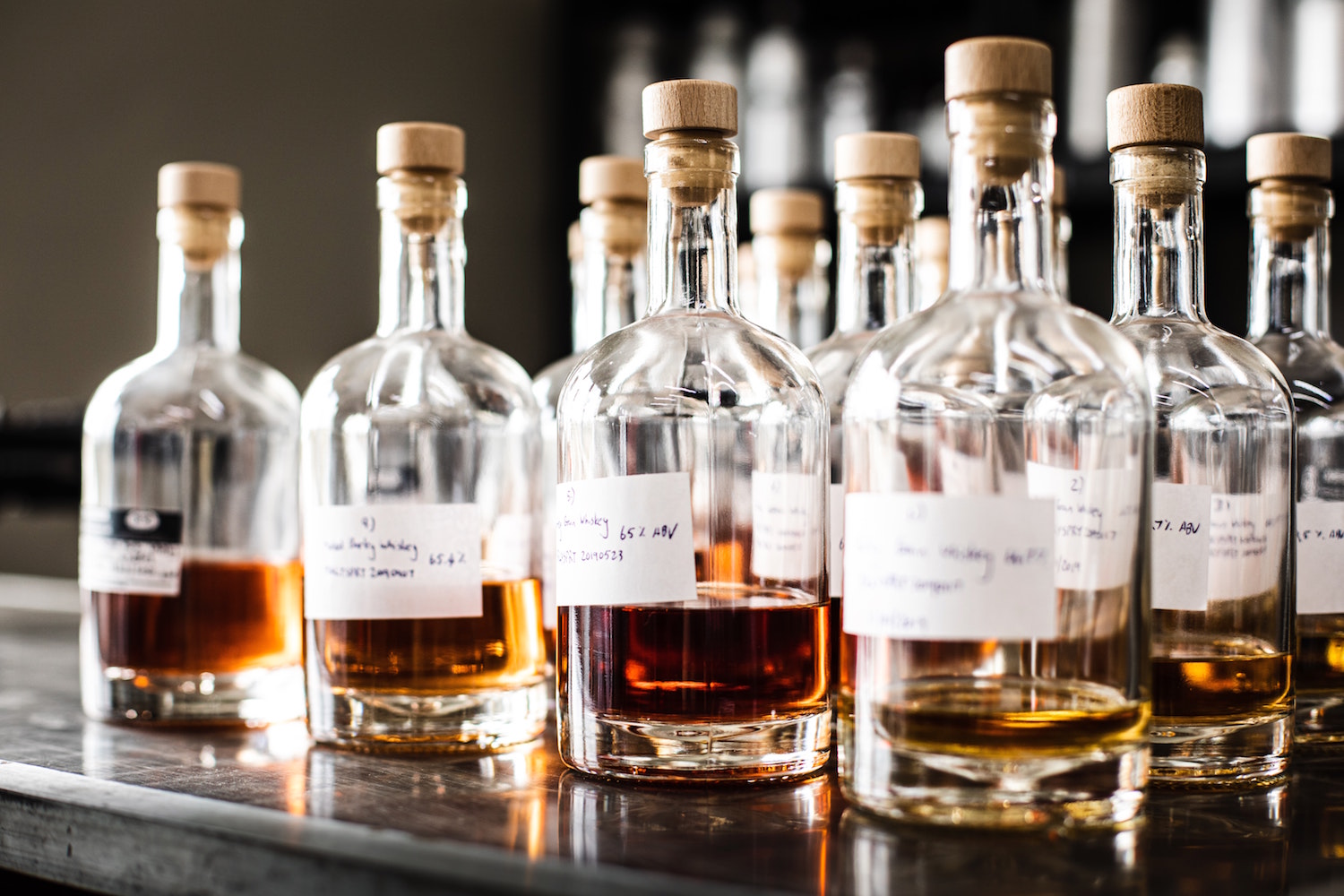
How Brandy Is Made
There is no single universal standard: raw materials and regional practice produce distinct brandy types, each with its own character. The base may be grape must or even pomace (skins, seeds, and pulp left after pressing). Many versions use fruits or berries—Calvados (apples) or framboise (raspberries), for example.
For grape-based brandies (Cognac, Armagnac, Brandy de Jerez), ripe, healthy grapes are washed, sorted, and pressed. The must ferments to about 9% ABV. Distillation follows—either once or twice, depending on the style. Grappa, chacha, or rakia use pomace as the base (skins, pulp, and seeds).
If a single distillation is used, it continues until the spirit reaches about 68–72% ABV. With double distillation, the first run yields ~30% ABV and the second can reach up to ~75% ABV. Cognac requires double distillation; some Calvados styles follow different methods.
Ageing in oak after distillation is not mandatory. Some styles are blended and bottled directly—typically clear and with a more pronounced nose. Those meant to mature in barrel usually age at least six months. In Spain, the Solera system is common, blending older distillates with younger ones.
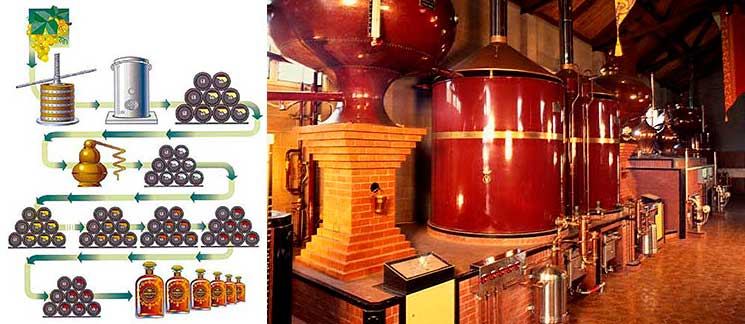
Pomace distillates—grappa, chacha, and rakia—often appear in clear, uncolored bottlings.
Types and Categories
Three main groups:
- Grape brandy (from pure must)
- Pomace brandy (from the solid pressings)
- Fruit brandy (from various fruits or berries)
Each has its own methods and traits. Grape brandy is typically at least 38% ABV. Examples include:
- Cognac — from the Cognac region of France;
- Armagnac — from France, known for long ageing—often 10–12 years or more;
- Brandy de Jerez — Spain; oak-aged, from roughly 6 months;
- Metaxa — Greece; a distinctive blend of grape brandy, Muscat wines, and aromatic botanicals;
- Divin — Republic of Moldova; made using Cognac-style technology;
- Pliska — Bulgaria; a blend of three grape varieties, aged at least 5 years in oak.
The second group comprises pomace brandies , notably chacha (Georgia) , grappa (Italy), rakia (South-Slavic regions), and törköly pálinka (Hungary).
Fruit brandies are most often nearly colorless with a distinct varietal aroma. Common bases include peaches, apples, raspberries, plums, sour cherries, and bilberries. Examples:
- Calvados (apples);
- Slivovitz (plums);
- Framboise (raspberries);
- Pálinka (Hungary);
- Kirsch (morello cherries/bitter cherries);
- Borovička (juniper).
Brandy can also be grouped by strength. Some sources distinguish:
- Very high-proof types — up to ~80–90% ABV;
- Pomace brandies (e.g., grappa) — up to ~80% ABV;
- Regular types — up to ~75% ABV.
The first two are generally not consumed as is; they’re diluted or used in blends.
Ageing
Broadly, the longer the ageing, the more refined—and expensive—the spirit. Typical ranges:
- Standard/“ordinary” — aged 3, 4, or 5 years (often marked with “stars,” where star count ≈ years; usual strength ~40–42% ABV);
- Branded/“marque” — at least 6 years, with common sub-categories (local terms vary):
- KV (“aged”) — 6–7 years, 40–42% ABV, 7–12 g/l sugar;
- KVVK (“superior aged”) — 8–10 years, 40–45% ABV, 7–25 g/l sugar;
- KS (“old”) — over 10 years, 40–57% ABV, 7–20 g/l sugar;
- Collection — the flagships: distillates aged 10+ years, then an additional minimum of 3 years in oak for finesse and a golden hue.
France uses a well-known system to indicate the youngest eau-de-vie in a Cognac blend (older components may also be present):
- VS — minimum 2 years;
- VO — minimum 4 years;
- VOP — pale, minimum 4 years;
- VSO — good quality, around 4 years;
- VSEP — pale, minimum 4 years;
- VSOP — approx. 4 to 25 years;
- WSOP — superior quality, about 4–25 years;
- XO — extra old, roughly 6–70 years.
Note: Internationally, VS, VSOP, and XO are the most widely recognized Cognac designations; the others appear less often or in local contexts.
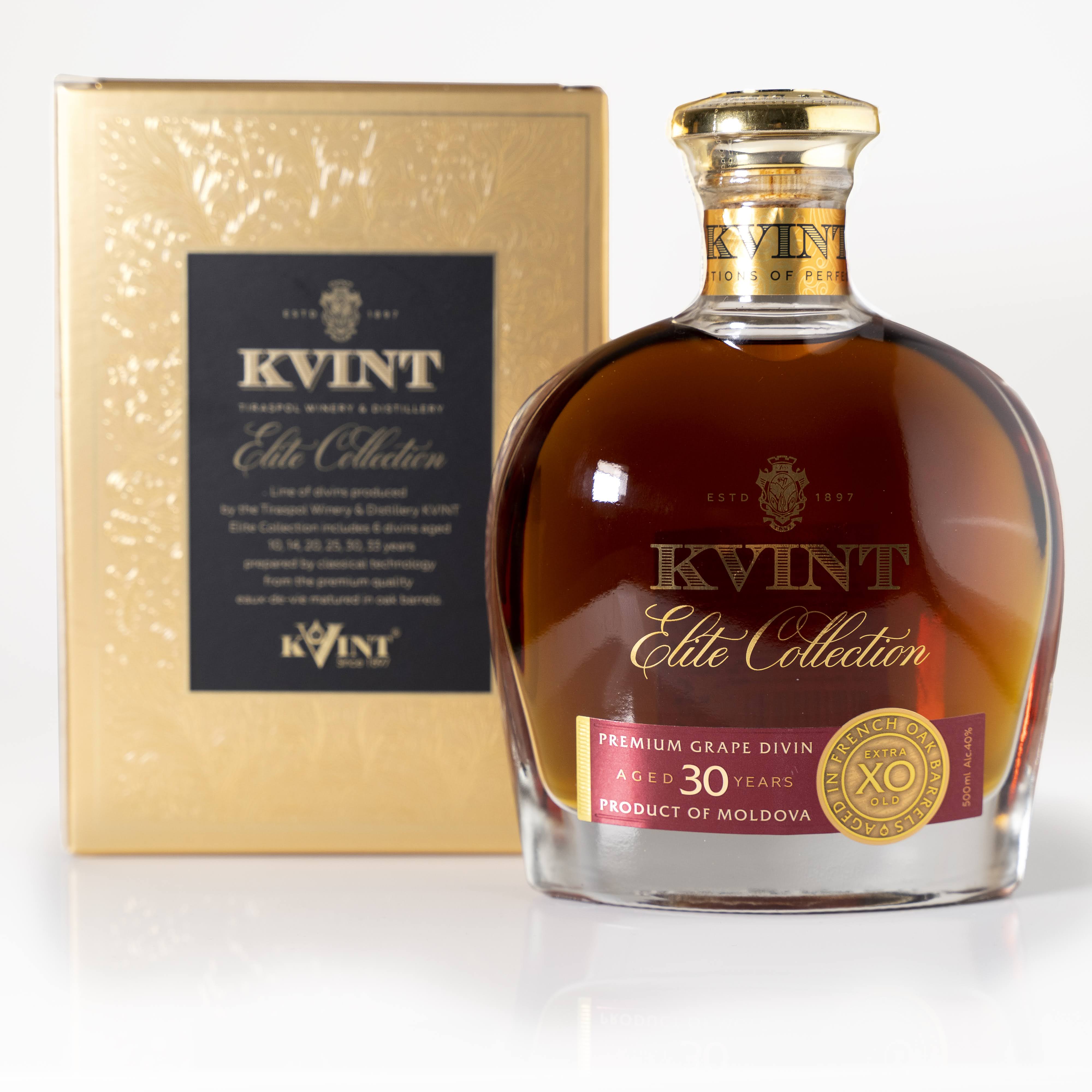
How to Drink Brandy
Brandy suits a cold buffet, a quiet evening with friends, or a festive dinner. Classic pairings include fine charcuterie, cheeses, and olives.
For dessert, serve white grapes, apples, pears, bananas, nuts, or ice cream. Dark, bittersweet chocolate works best. Lemon and milk chocolate pairings are often debated in many European countries, as their strong flavors can mask the spirit’s bouquet.
For heartier bites, brandy pairs with salads and hot meat-and-potato dishes. One caveat: fish and seafood tend to overpower brandy; however, caviar sandwiches can be a clever match.
Ideal companions: a freshly brewed coffee or strong black tea. If the spirit feels too intense, soften it with still water or tonic; fruit juices—especially grape or orange—can also tame the heat.
With premium selections, the usual advice is to avoid food so as not to blur the aromatic palette. These are best savored in a small circle, with coffee and, for enthusiasts, a cigar: coffee first, then brandy, cigar last.
Aperitif or digestif? Brandy works beautifully as an aperitif (stimulates appetite). Slightly chilled—15–16 °C—and even over a cube or two of ice is fine. It’s equally at home as a digestif alongside coffee.
When served neat, use a snifter (brandy balloon)—glass or crystal, tulip-shaped with a rounded bowl, slightly narrowed rim, and short stem. Bring the brandy to no more than 16 °C before pouring, and fill the glass below halfway—up to where the bowl begins to narrow.
Then gently warm it toward ~22 °C to open the bouquet. Connoisseurs cradle the glass in their hands. Heat releases volatile aromatics: you may catch vanilla notes followed by subtle floral and fruity accents. Sip slowly, savoring each layer.
Brandy Cocktails
Mixology fans have countless options. For cocktails, a sound “everyday” brandy is ideal—well-made but not too pricey. A few ideas:
- “The Star” — In a shaker: 50 g ice cream (whipped-cream style), 20 ml crème de menthe, 30 ml Calvados, 10 ml tequila. Shake, strain into a glass, garnish with a lemon slice or a cherry.
- Brandy Cobbler — Muddle in a shaker: a slice of pineapple, two orange slices, a little lemon peel. Add 60 ml grape brandy and 20 ml raspberry syrup. In a tall glass place an orange and a lemon slice, add crushed ice, then strain the mix over. Serve with a straw; garnish with mint and raspberries if desired.
- Alexander — Half-fill a shaker with crushed ice; add 40 ml brandy, 40 ml crème de cacao, 40 ml light cream (10%). Shake well, strain, and dust with finely grated nutmeg.
- Eggnog — In a blender: 5 quail eggs (or 1 chicken egg), 40 ml brandy, 50 ml heavy cream, 1 tsp sugar. Blend 5–7 minutes. Pour into an old fashioned glass.
- Dragon — In a tall glass: 150 ml dark beer, 80 ml apricot brandy, 30 ml light cream (10%). Stir briskly to form a generous head. Drink immediately.
- Brandy Martini — In a shaker with crushed ice: 25 ml brandy, 50 ml white vermouth (e.g., Martini Bianco), 100 ml tonic, two olives, a lemon slice, a touch of honey. Shake and pour. (Any white vermouth will do.)
- Japanese — In a shaker: 60 ml brandy, a squeeze of lime juice, 1 tsp almond essence, ~15 dashes Angostura bitters. Shake 3–4 minutes, pour over ice. Garnish with lime or lemon.
- Jack Rose — In a shaker: 45 ml apple brandy, 10 ml grenadine, 20 ml lime juice. Shake 2–3 minutes, add ice, shake briefly again. Strain into a chilled glass, garnish with a lime slice, serve with a straw.

As in the past, brandy has many devotees: some prefer it neat to explore its layered aromatics; others prize its versatility in cocktails. Its emergence opened a wide field of creativity for winemakers; today there are hundreds of variations. Beyond being a matured distillate, brandy often serves as the alcohol base for many liqueurs, lending body, roundness, and warm notes on which flavors and sweetness are built.
A liqueur (from Lat. liquifacere — “to dissolve”) is a strong, flavored, sweetened drink. The “formula” combines a spirit or distillate (rum, whisky, brandy), aromatic ingredients, and a sweetener—sugar syrup, honey, or concentrated grape must.
Liqueurs trace back to the Middle Ages, when alchemists first produced alcohol—“aqua vitae”—for medicinal use. Monks noticed alcohol preserved the properties of herbs and roots; that insight birthed bitter, medicinal prototypes. These tinctures stayed niche until spices and cane sugar arrived in Europe; sweeter recipes then took off. Sweet liqueurs became fashionable with the aristocracy; in the 19th century lighter versions found favor with women; by the 20th century liqueurs were embedded in bar culture and became essential cocktail components. At Berezka we’ll help you pick just the right bottle for your occasion.
How Liqueurs Are Made
The base is alcohol—either rectified (purified of congeners) or distilled (retaining some character of the raw material). It’s flavored using one of the following:
- Maceration followed by redistillation: aromatic ingredients are infused, then the infusion is distilled again.
- Without redistillation: hot percolation through the aromatics, or long cold maceration at about 20 °C.
- For cream liqueurs: homogenization—alcohol, cream, and sugar are forced under pressure through a narrow orifice or finely emulsified into a uniform drink.
It’s a broad, diverse category that includes bitters , amaro , tinctures, balsams , and other country-specific styles. Liqueurs can be classified by strength, sugar content, and flavor profile.
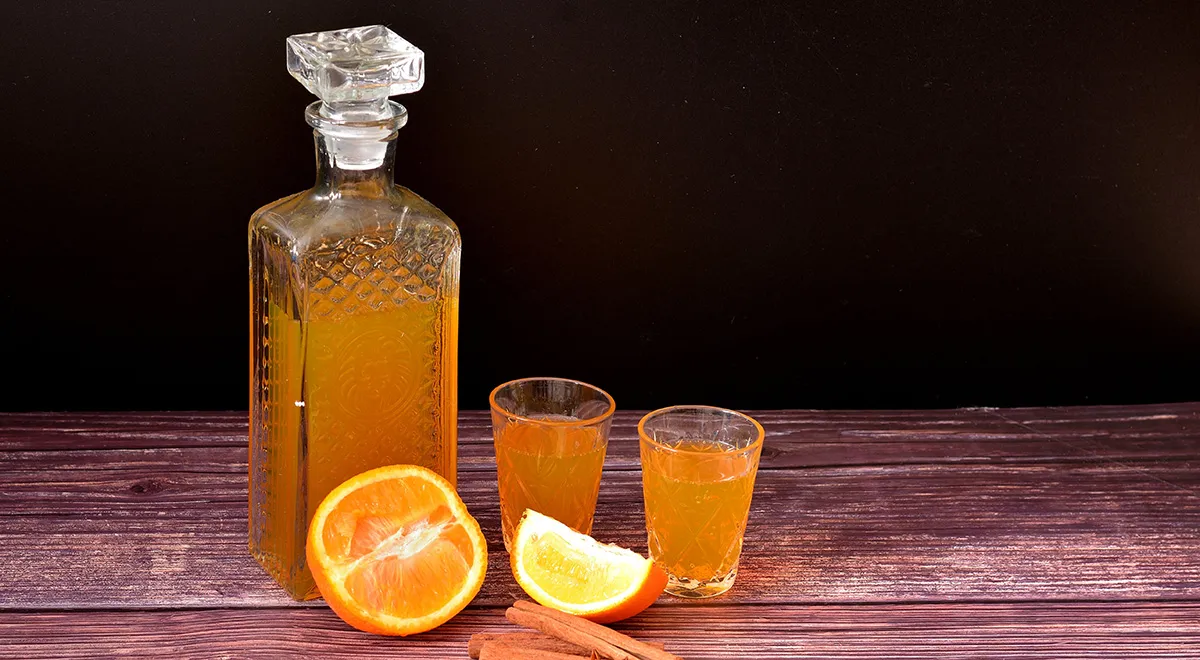
By Strength
- Strong — 35–50% ABV. Usually served as a digestif, neat or on the rocks, or used in cocktails.
- Medium — 25–35% ABV. Served similarly; sweeter (non-herbal) styles also feature in baking and desserts.
- Light — 15–25% ABV. Many are cream-based; suitable for tea, coffee, and gentle cocktails.
By Sugar Content
Under EU rules, anything labeled “liqueur” must contain at least 100 g of sugar per liter.
For the “Crème de …” category, the threshold is ≥ 250 g/l.
Exception: the classic Crème de Cassis at ≥ 400 g/l.
Important: don’t confuse “Crème” (a very sweet liqueur style) with “cream” (a dairy-based cream liqueur)!
By Flavor Profile
- Herbs & Spices
The earliest preserved infusions used botanicals and spices. Monastic know-how spread to physicians and apothecaries; many guarded their formulas, and some historic brands still follow them. For instance, Amaro Santoni uses 34 botanicals, while Fernet-Branca lists 27. Serve as a digestif—neat, on ice, with a lemon slice or mint leaf. They turn into easy spritzes with tonic, soda, or sparkling wine; sambuca even takes well to a splash of water. Our collection includes Becherovka, made with more than twenty types of herbs.
- Fruits & Berries
Arriving cane sugar and exotic fruits (Seville oranges, bananas, mangoes) changed everything: sweet liqueurs could be enjoyed for pleasure, not just as “medicine.” Local classics appeared: Maraschino (Croatian cherries), Crème de Cassis (Burgundy blackcurrants), Limoncello (Amalfi lemons), and many more. Use cases are broad—digestif, cocktails, baking and desserts; they can even enrich sauces for meat or fish. At Berezka you’ll find vișinată (sour-cherry liqueur) at 12.5% ABV.
- Nuts, Creams, Coffee
Nut and kernel infusions date to the 16th century; coffee and cream liqueurs arrived centuries later. Love of coffee inspired entire styles: Italians sip caffè corretto (espresso “corrected” with a splash of alcohol); the Irish added cream and whisky—innovators bottled these ideas and perfected ways to marry alcohol with dairy and coffee.
Note: this is the sweetest—and most deceptive—category. At the same 20% ABV, it can feel “gentler” than herbaceous bitters. Excellent in tea, coffee, desserts, and classics like the White Russian or B-52. Do keep moderation in mind: large servings of sweet liqueur can be as potent, in effect, as absinthe.
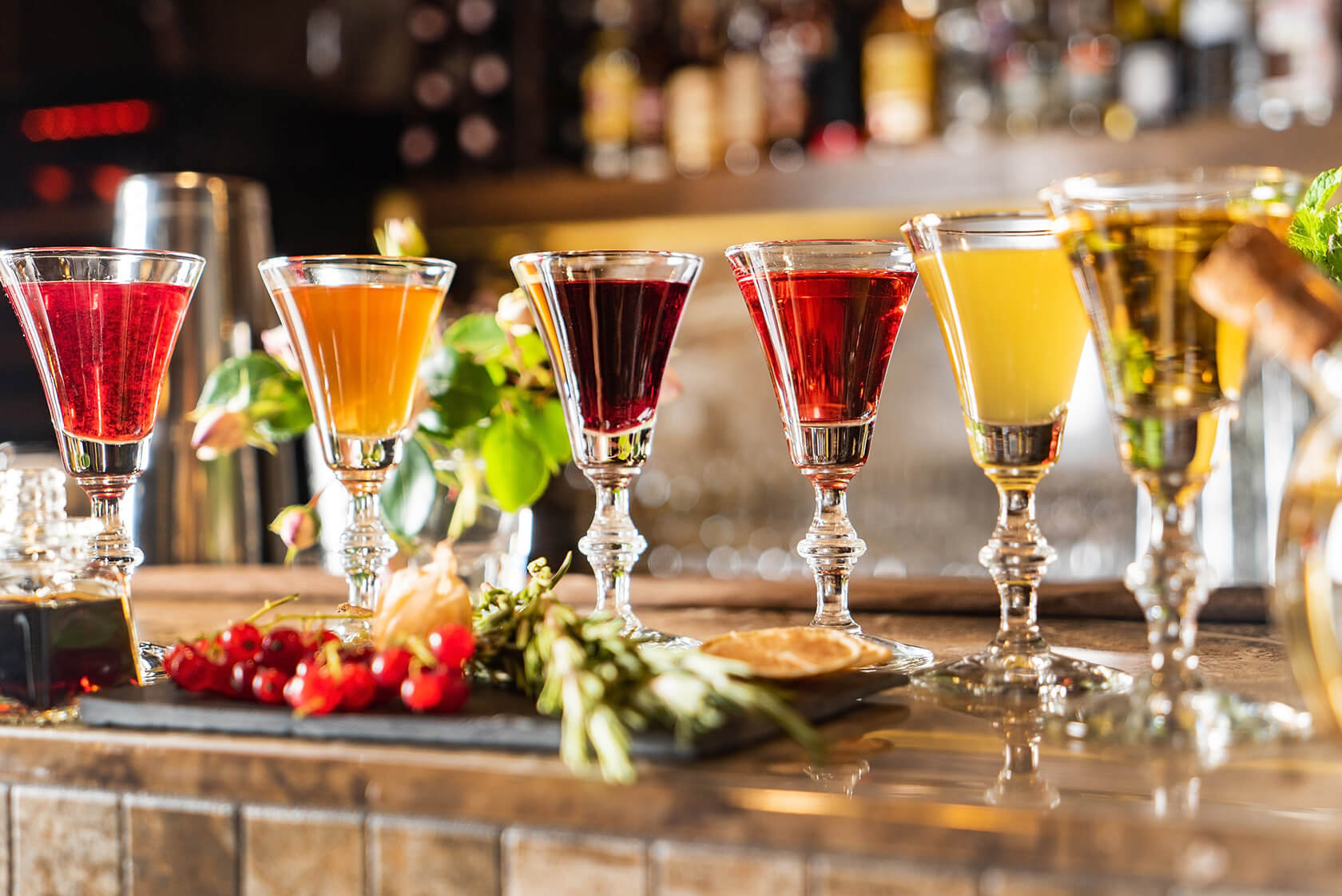



 București
București


